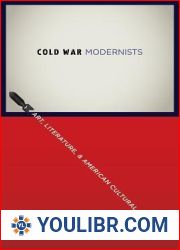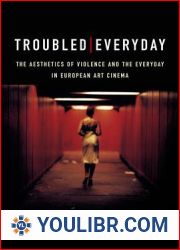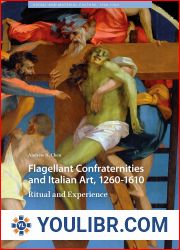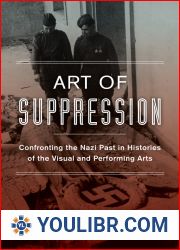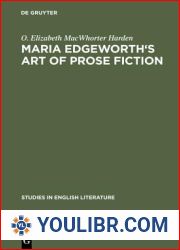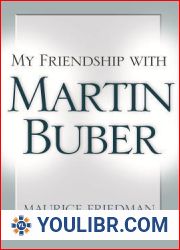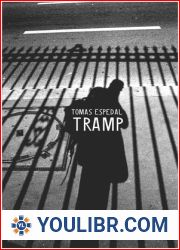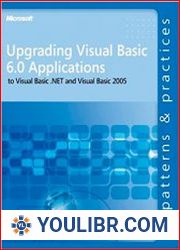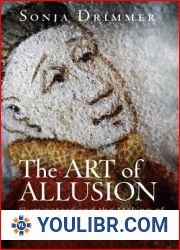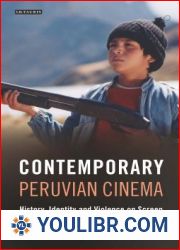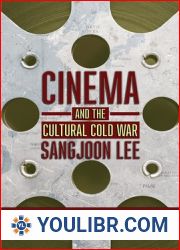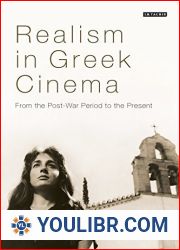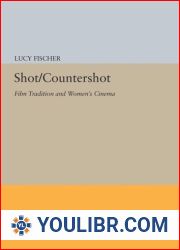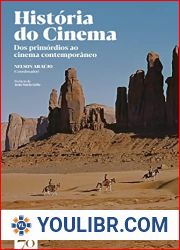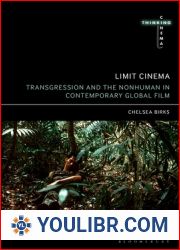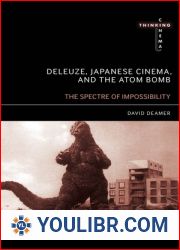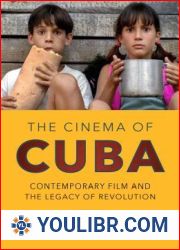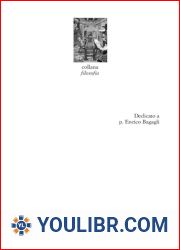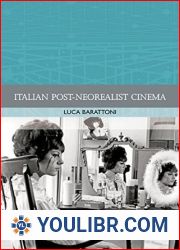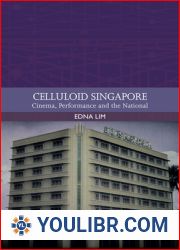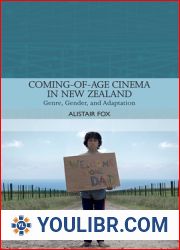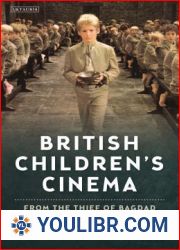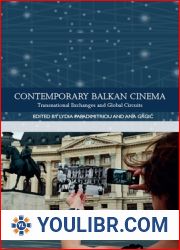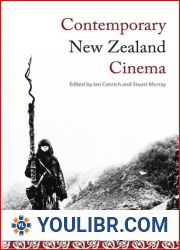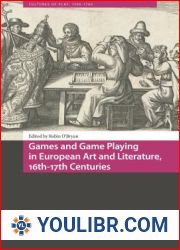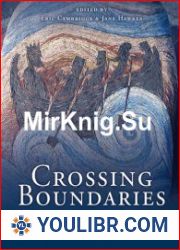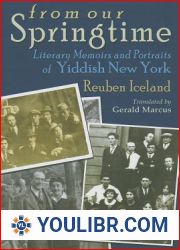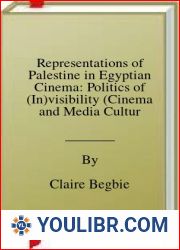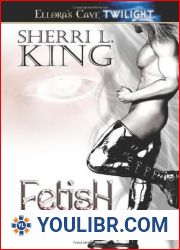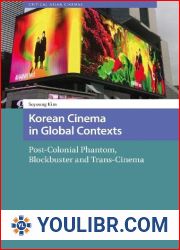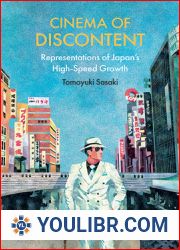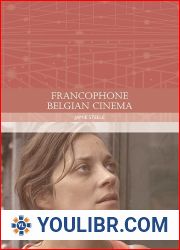
BOOKS - Fetish, The: Literature, Cinema, Visual Art

Fetish, The: Literature, Cinema, Visual Art
Author: Massimo Fusillo
Year: January 1, 2012
Format: PDF
File size: PDF 8.4 MB
Language: English

Year: January 1, 2012
Format: PDF
File size: PDF 8.4 MB
Language: English

Fetish The Literature Cinema Visual Art In the book "Fetish: The Literature, Cinema, and Visual Arts the author explores the growing trend of object fetishism in contemporary society, particularly in the realms of literature and the visual arts, including cinema. Through a combination of historical context and theoretical underpinnings, the author identifies several recurring patterns that characterize this phenomenon. These include the use of objects as sites for memory and the trope of animating the inanimate, as well as the fascination with the alterity of matter and the resulting gnoseological questions that arise. The book begins by examining how modernism, with its emphasis on the new and the different, has led to a more overt expression of emotional values being projected onto objects. This is exemplified through the works of authors such as Proust, Woolf, Joyce, and Mann, who all explore the ways in which objects can become imbued with human-like qualities. However, the author argues that this tendency towards object fetishism also raises thorny gnoseological questions about the nature of reality and our relationship with objects.
Fetish The Literature Cinema Visual Art В книге «Fetish: The Literature, Cinema, and Visual Arts» автор исследует растущую тенденцию объектного фетишизма в современном обществе, особенно в сферах литературы и изобразительного искусства, включая кинематограф. Посредством сочетания исторического контекста и теоретических основ автор выделяет несколько повторяющихся паттернов, характеризующих это явление. К ним относятся использование предметов в качестве площадок для памяти и троп одушевления неживых, а также увлечение альтерацией материи и возникающие в результате гносеологические вопросы. Книга начинается с изучения того, как модернизм с его акцентом на новое и другое привел к более открытому выражению эмоциональных ценностей, проецируемых на объекты. Это подтверждается работами таких авторов, как Пруст, Вульф, Джойс и Манн, которые все исследуют способы, с помощью которых объекты могут проникнуться человеческими качествами. Однако автор утверждает, что эта тенденция к объектному фетишизму также поднимает тернистые гносеологические вопросы о природе реальности и наших отношениях с объектами.
Fetish The Literature Cinema Visual Art Dans Fetish : The Literature, Cinema, and Visual Arts, l'auteur explore la tendance croissante du fétichisme des objets dans la société moderne, en particulier dans les domaines de la littérature et des arts visuels, y compris le cinéma. En combinant le contexte historique et les bases théoriques, l'auteur met en évidence plusieurs schémas répétitifs qui caractérisent ce phénomène. Il s'agit notamment de l'utilisation d'objets comme sites de mémoire et de trop d'animations des non-vivants, ainsi que de la passion pour l'altération de la matière et des questions épistémologiques qui en découlent. livre commence par explorer comment le modernisme, avec son accent sur le nouveau et l'autre, a conduit à une expression plus ouverte des valeurs émotionnelles projetées sur les objets. Cela est confirmé par les travaux d'auteurs tels que Proust, Wolf, Joyce et Mann, qui explorent tous les moyens par lesquels les objets peuvent pénétrer les qualités humaines. Cependant, l'auteur affirme que cette tendance au fétichisme d'objet soulève également des questions épineuses épistémologiques sur la nature de la réalité et nos relations avec les objets.
Fetish The Literature Cinema Visual Art En Fetish: The Literature, Cinema, and Visual Arts, el autor explora la creciente tendencia del fetichismo de objetos en la sociedad actual, especialmente en los campos de la literatura y las artes visuales, incluyendo el cine. A través de una combinación de contexto histórico y fundamentos teóricos, el autor distingue varios patrones repetitivos que caracterizan este fenómeno. Estos incluyen el uso de objetos como plataformas para la memoria y senderos para animar a los no vivos, así como la fascinación por la alteración de la materia y las cuestiones epistemológicas resultantes. libro comienza estudiando cómo el modernismo, con su énfasis en lo nuevo y en lo diferente, ha llevado a una expresión más abierta de los valores emocionales proyectados sobre los objetos. Así lo confirman los trabajos de autores como Proust, Wulf, Joyce y Mann, que todos exploran las formas en que los objetos pueden penetrar en las cualidades humanas. n embargo, el autor sostiene que esta tendencia al fetichismo de objetos también plantea espinosas preguntas epistemológicas sobre la naturaleza de la realidad y nuestra relación con los objetos.
Fetish The Literatura Cine Arte Visual No livro «Fetish: The Literatura, Cinema, e Arte Visual», o autor explora a crescente tendência do fetichismo de objetos na sociedade moderna, especialmente nas áreas da literatura e das artes visuais, incluindo o cinema. Através de uma combinação de contexto histórico e fundamentos teóricos, o autor destaca vários patterns repetitivos que caracterizam este fenômeno. Estes incluem a utilização de objetos como locais de memória e de animação de pessoas que não vivem, assim como o fascínio pela alteração da matéria e as questões hnoseológicas resultantes. O livro começa por estudar como o modernismo, com sua ênfase no novo e no outro, levou a uma expressão mais aberta dos valores emocionais projetados nos objetos. Isto é comprovado pelo trabalho de autores como Proust, Wolf, Joyce e Mann, que todos exploram as formas pelas quais os objetos podem dominar as qualidades humanas. No entanto, o autor afirma que esta tendência ao fetichismo de objetos também levanta questões hnoseológicas ternas sobre a natureza da realidade e a nossa relação com os objetos.
Fetish The tterature Cinema Visual Art Nel libro «Fetish: The tterature, Cinema, e Visual Arts», l'autore esplora la crescente tendenza del feticismo degli oggetti nella società moderna, soprattutto nei settori della letteratura e delle arti visive, tra cui il cinema. Attraverso una combinazione di contesto storico e basi teoriche, l'autore evidenzia alcuni dei pattern ricorrenti che caratterizzano questo fenomeno. Questi includono l'uso di oggetti come luoghi per la memoria e l'animazione dei non viventi, e la passione per l'altrazione della materia e i problemi epocali derivanti. Il libro inizia studiando come il modernismo, con il suo accento su ciò che è nuovo e diverso, ha portato a un'espressione più aperta dei valori emotivi proiettati verso gli oggetti. Questo è confermato dal lavoro di autori come Proust, Wolff, Joyce e Mann, che stanno tutti esplorando i modi in cui gli oggetti possono essere influenzati dalle qualità umane. Ma l'autore sostiene che questa tendenza al feticismo degli oggetti solleva anche questioni epizootiche terne sulla natura della realtà e sul nostro rapporto con gli oggetti.
Fetish The Literature Cinema Visual Art In dem Buch „Fetish: The Literature, Cinema, and Visual Arts“ untersucht der Autor die wachsende Tendenz des Objektfetischismus in der modernen Gesellschaft, insbesondere in den Bereichen Literatur und bildende Kunst, einschließlich des Kinos. Durch die Kombination von historischem Kontext und theoretischen Grundlagen identifiziert der Autor mehrere wiederkehrende Muster, die dieses Phänomen charakterisieren. Dazu gehören die Nutzung von Objekten als Plattformen für die Erinnerung und die Belebungswege der Unbelebten sowie die Faszination für die Alteration der Materie und die daraus resultierenden erkenntnistheoretischen Fragen. Das Buch beginnt mit der Untersuchung, wie die Moderne mit ihrer Betonung des Neuen und Anderen zu einem offeneren Ausdruck der auf die Objekte projizierten emotionalen Werte geführt hat. Dafür sprechen die Arbeiten von Autoren wie Proust, Wulff, Joyce und Mann, die alle nach Wegen forschen, wie Objekte menschliche Qualitäten durchdringen können. Der Autor argumentiert jedoch, dass diese Tendenz zum Objektfetischismus auch dornige erkenntnistheoretische Fragen nach der Natur der Realität und unserer Beziehung zu Objekten aufwirft.
Fetysz The Literature Cinema Visual Art W książce Fetysz: Literatura, kino i sztuki wizualne autor bada rosnący trend fetyszyzmu przedmiotów we współczesnym społeczeństwie, zwłaszcza w dziedzinie literatury i sztuki pięknej, w tym w kinie. Poprzez połączenie kontekstu historycznego i fundamentów teoretycznych autor identyfikuje kilka powtarzających się wzorców charakteryzujących to zjawisko. Obejmują one wykorzystanie obiektów jako miejsc pamięci i ścieżek do animacji nieożywionego, a także fascynację zmianą materii i wynikającymi z tego pytaniami epistemologicznymi. Książka zaczyna się od zbadania, jak modernizm, z naciskiem na nowe i inne, doprowadził do bardziej otwartego wyrażania wartości emocjonalnych rzutowanych na obiekty. Jest to poparte twórczością autorów takich jak Proust, Woolf, Joyce i Mann, którzy wszyscy badają sposoby, w jaki przedmioty mogą być obdarzone ludzkimi cechami. Autor twierdzi jednak, że ta skłonność do fetyszyzmu obiektowego rodzi również cierniowe pytania epistemologiczne o naturę rzeczywistości i naszą relację z obiektami.
פטיש The Literature Cinema Visual Art בספר פטיש: The Literature, Cinema, and Visual Arts, המחבר חוקר את המגמה הגוברת של פטישיזם אובייקט בחברה המודרנית, במיוחד בתחומי הספרות והאמנות היפות, כולל הקולנוע. באמצעות שילוב של הקשר היסטורי ויסודות תאורטיים, מזהה המחבר מספר דפוסים חוזרים המאפיינים תופעה זו. הן כוללות שימוש בחפצים כאתרים לזיכרון ונתיבים להחייאת הדומם, וכן משיכה לשינוי החומר ולשאלות האפיסטמולוגיות הנובעות מכך. הספר מתחיל בכך שהוא בוחן כיצד המודרניזם, עם הדגש שלו על חדש ושונה, הוביל לביטוי פתוח יותר של ערכים רגשיים המוקרנים על עצמים. עבודה זו נתמכת על ידי סופרים כגון פרוסט, וולף, ג 'ויס ומאן, אשר כולם חוקרים דרכים בהן ניתן לחדור לאובייקטים בעלי תכונות אנושיות. עם זאת, המחבר טוען כי נטייה זו כלפי פטישיזם אובייקט גם מעלה שאלות אפיסטמולוגיות קוצניות על טבעה של המציאות ועל יחסינו עם אובייקטים.''
Fetiş Edebiyat nema Görsel Sanat Fetiş: Edebiyat, nema ve Görsel Sanatlar kitabında yazar, modern toplumda, özellikle de edebiyat ve güzel sanatlar alanlarında artan nesne fetişizmi eğilimini araştırıyor. Tarihsel bağlam ve teorik temellerin bir kombinasyonu yoluyla, yazar bu fenomeni karakterize eden birkaç yinelenen paterni tanımlar. Bunlar, nesnelerin hafıza için siteler ve cansız canlandırma yolları olarak kullanılmasının yanı sıra madde değişikliği ve sonuçta ortaya çıkan epistemolojik sorularla büyülenmeyi içerir. Kitap, modernizmin, yeni ve farklılığa vurgu yaparak, nesnelere yansıtılan duygusal değerlerin daha açık bir şekilde ifade edilmesine nasıl yol açtığını inceleyerek başlıyor. Bu, Proust, Woolf, Joyce ve Mann gibi yazarların, nesnelerin insan nitelikleriyle iç içe geçebileceği yolları araştıran çalışmaları tarafından desteklenmektedir. Bununla birlikte, yazar, nesne fetişizmine yönelik bu eğilimin, gerçekliğin doğası ve nesnelerle olan ilişkimiz hakkında dikenli epistemolojik soruları da gündeme getirdiğini savunuyor.
صنم الأدب الفن البصري في كتاب صنم: الأدب والسينما والفنون البصرية، يستكشف المؤلف الاتجاه المتزايد لفتشية الكائن في المجتمع الحديث، خاصة في مجالات الأدب والفنون الجميلة، بما في ذلك السينما. من خلال مزيج من السياق التاريخي والأسس النظرية، يحدد المؤلف العديد من الأنماط المتكررة التي تميز هذه الظاهرة. وتشمل هذه استخدام الأشياء كمواقع للذاكرة ومسارات لتحريك الجماد، بالإضافة إلى الانبهار بتغيير المادة والأسئلة المعرفية الناتجة. يبدأ الكتاب بفحص كيف أدت الحداثة، مع تركيزها على الجديد والمختلف، إلى تعبير أكثر انفتاحًا عن القيم العاطفية المسقطة على الأشياء. ويدعم ذلك عمل مؤلفين مثل بروست وولف وجويس ومان، الذين يستكشفون جميعًا طرقًا يمكن من خلالها تشبع الأشياء بالصفات البشرية. ومع ذلك، يجادل المؤلف بأن هذا الميل نحو فتشية الكائن يثير أيضًا أسئلة معرفية شائكة حول طبيعة الواقع وعلاقتنا بالأشياء.
Fetish The Literature Cinema Visual Art 책 Fetish: The Literature, Cinema 및 Visual Arts에서 저자는 현대 사회, 특히 영화를 포함한 문학 및 미술 분야에서 점점 더 많은 대상 페티시즘 추세를 탐구합니다. 역사적 맥락과 이론적 기초의 조합을 통해 저자는이 현상을 특징 짓는 몇 가지 되풀이 패턴을 식별합니다. 여기에는 무생물을 애니메이션화하기위한 사이트 및 경로로 객체를 사용하는 것뿐만 아니라 물질 변경 및 인식 론적 질문에 대한 매력이 포함됩니다. 이 책은 새롭고 다른 것에 중점을 둔 모더니즘이 어떻게 대상에 투영 된 감정적 가치에 대한보다 개방적인 표현으로 이어 졌는지 조사하는 것으로 시작됩니다. 이것은 Proust, Woolf, Joyce 및 Mann과 같은 저자의 작품에 의해 뒷받침되며, 모두 사물에 인간의 특성을 부여 할 수있는 방법을 모색합니다. 그러나 저자는 대상 페티시즘에 대한 이러한 경향이 현실의 본질과 대상과의 관계에 대한 가시적 인식 론적 질문을 제기한다고 주장한다.
Fetish The Literature Cinema Visual Art著書「Fetish: The Literature、 Cinema、 and Visual Arts」では、現代社会におけるオブジェクトフェティシズムのトレンド、特に映画を含む文学や美術の分野について探求している。歴史的文脈と理論的基礎の組み合わせによって、著者はこの現象を特徴付けるいくつかの繰り返しパターンを特定する。これらは、無生物を動かすための記憶や経路のためのサイトとしてのオブジェクトの使用だけでなく、物質の変化とその結果の認識論的な質問への魅力を含みます。この本は、モダニズムが新しいものと異なるものに重点を置いて、どのようにオブジェクトに投影された感情的価値のよりオープンな表現につながっているかを検討することから始まります。これは、Proust、 Woolf、 Joyce、 Mannなどの著者の作品によって支えられています。しかし、このようなオブジェクトフェティシズムへの傾向は、現実の本質と物体との関係に関する認識論的な疑問も生じていると著者は論じている。
Fetish The Literature Cinema Visual Art作者在「Fetish: The Literature, Cinema, and Visual Arts」一書中探討了當代社會中對象戀物癖的增長趨勢,特別是在文學和視覺藝術領域,包括電影。通過歷史背景和理論基礎的結合,作者確定了這種現象的幾種重復模式。這些包括將物品用作非生物的記憶和呼吸的場所,以及對物質變質的迷戀以及由此產生的認識論問題。這本書首先探討了現代主義如何強調新穎性,從而更公開地表達了投射到物體上的情感價值。普魯斯特(Prust),沃爾夫(Wolfe),喬伊斯(Joyce)和曼恩(Mann)等作者的作品都證實了這一點,他們都探索了物體可以吸收人類品質的方式。然而,作者認為,對象戀物癖的這種趨勢也提出了關於現實性質和我們與對象關系的棘手的認識論問題。










